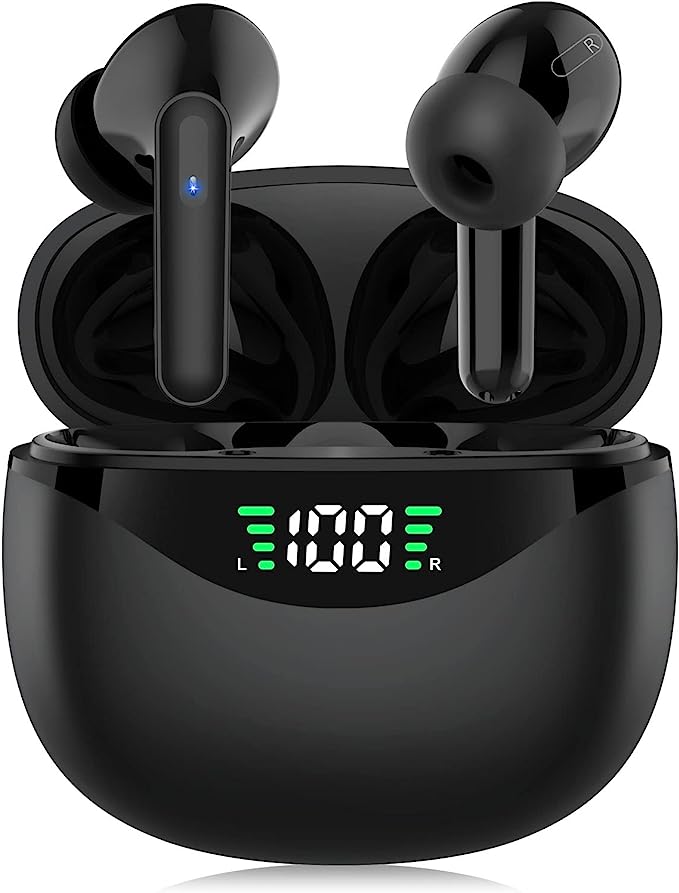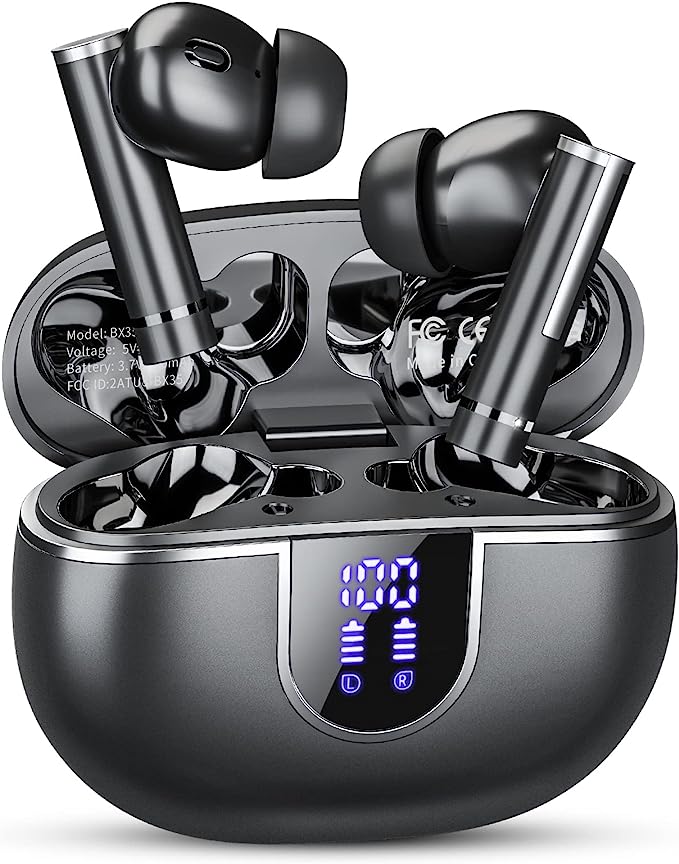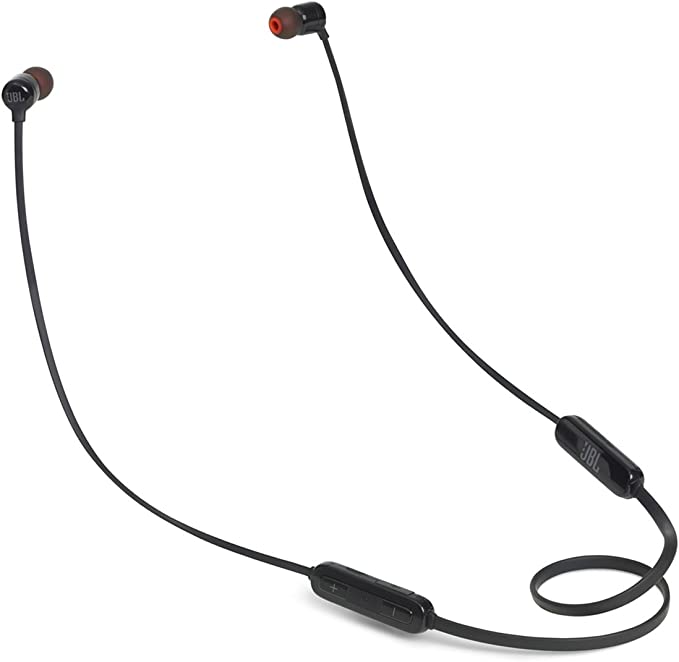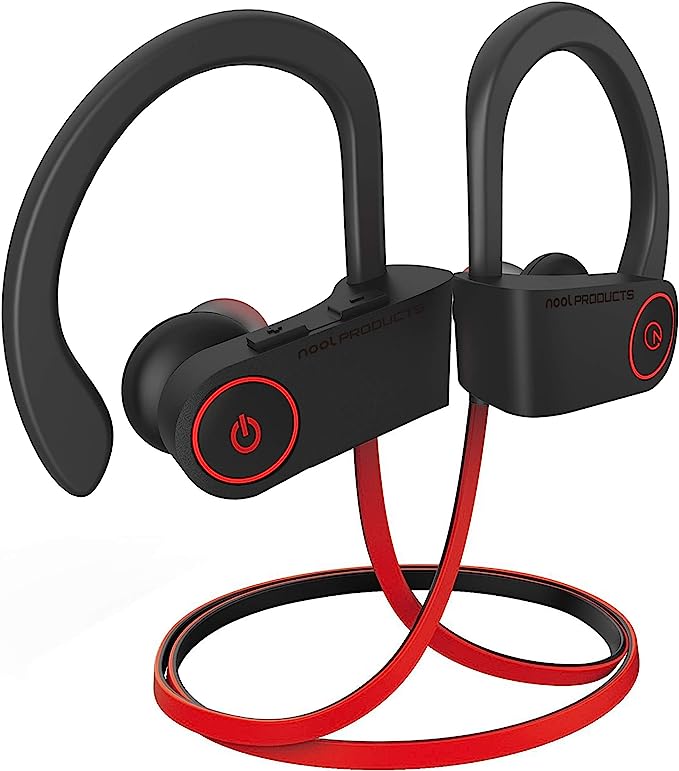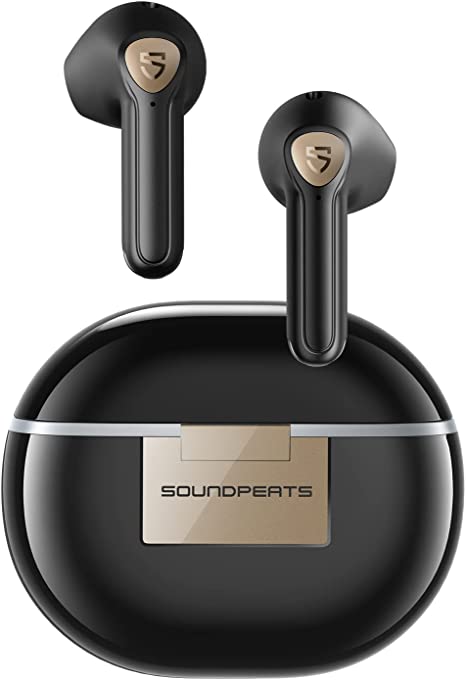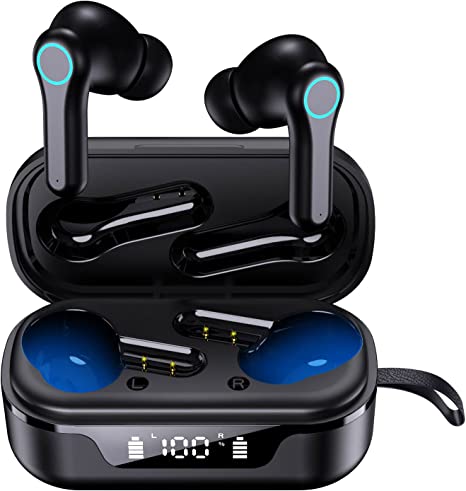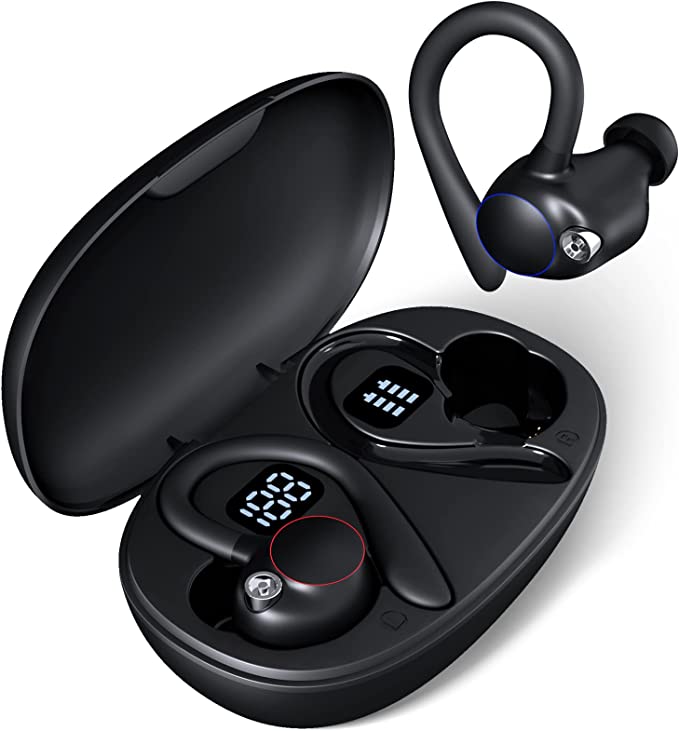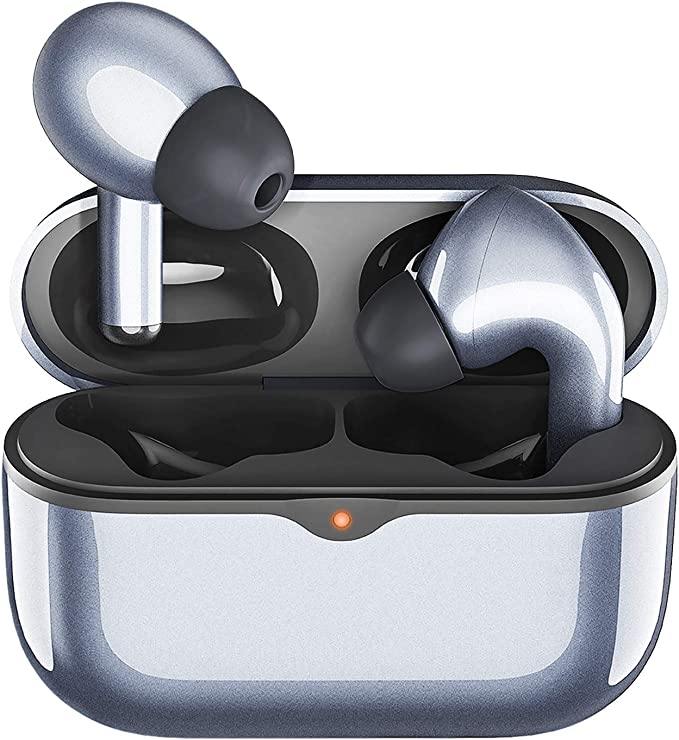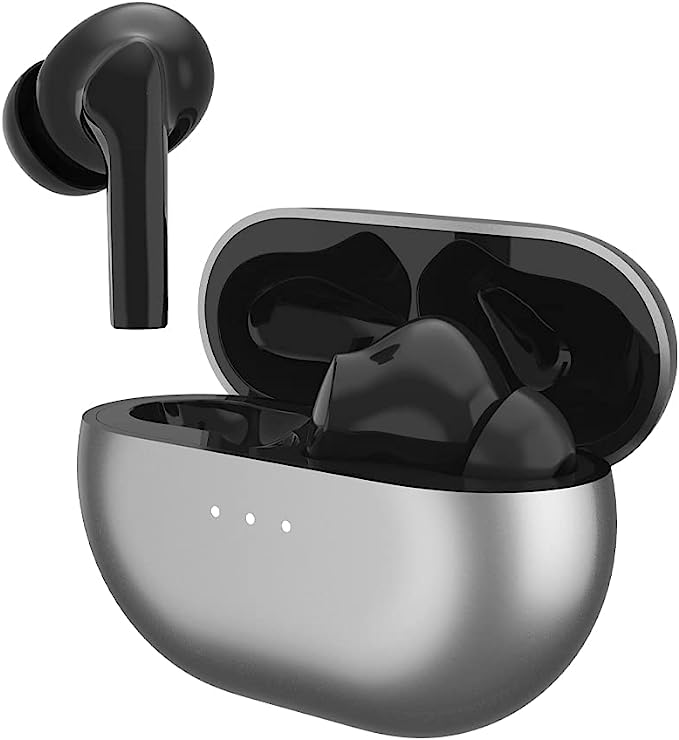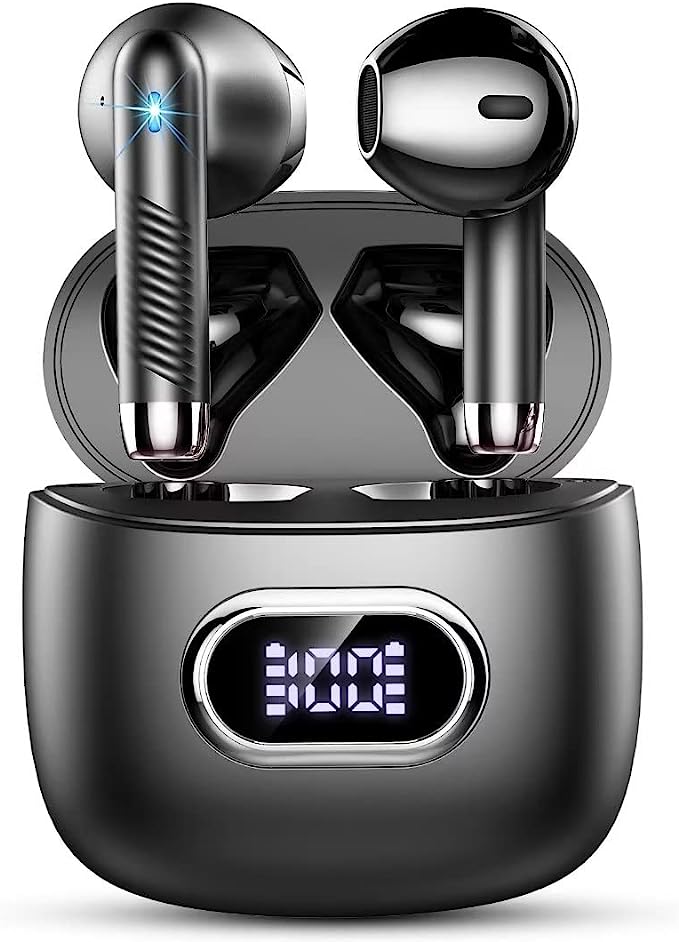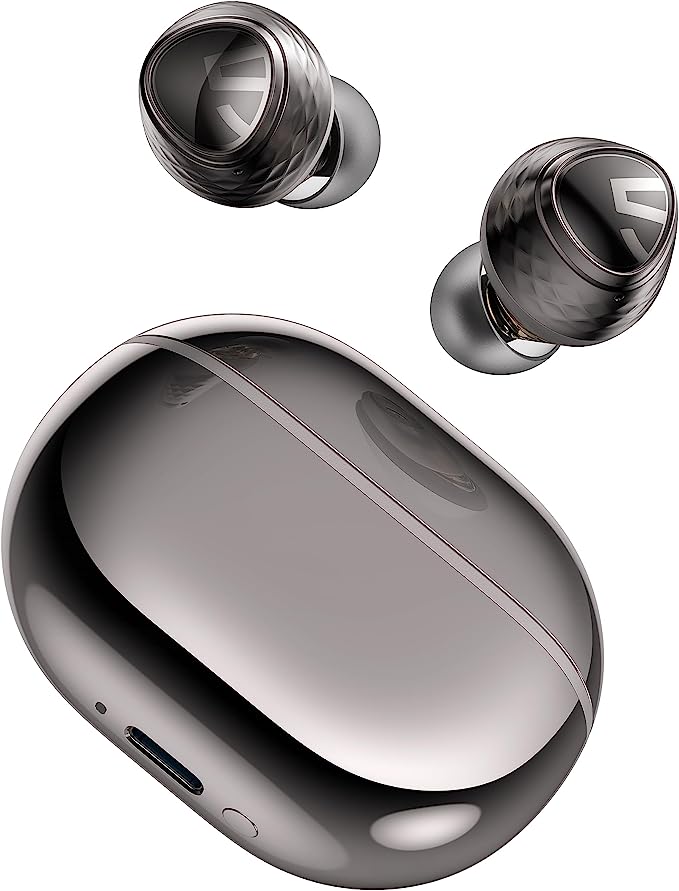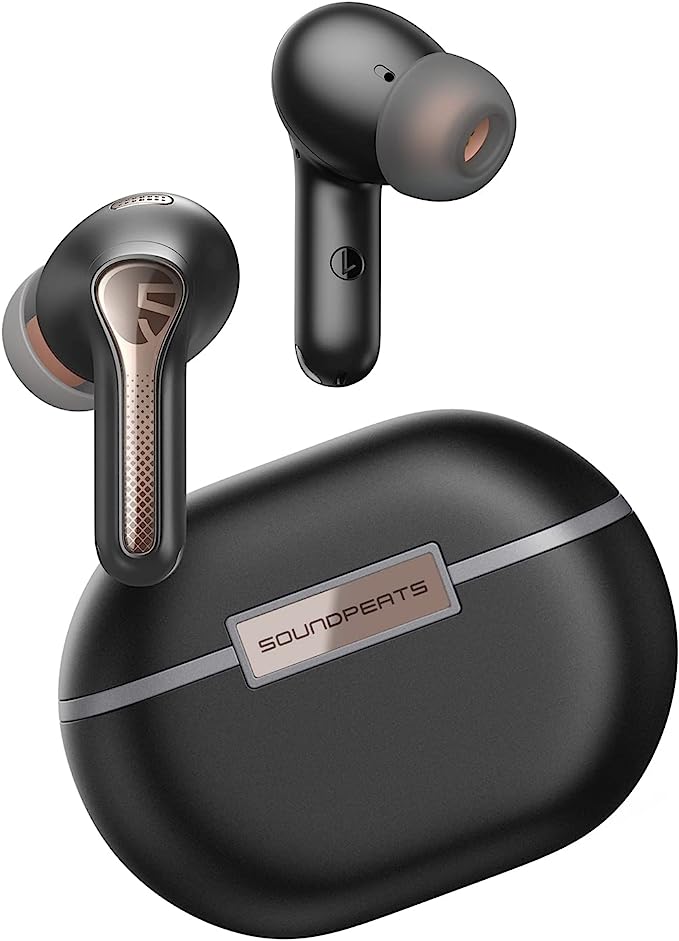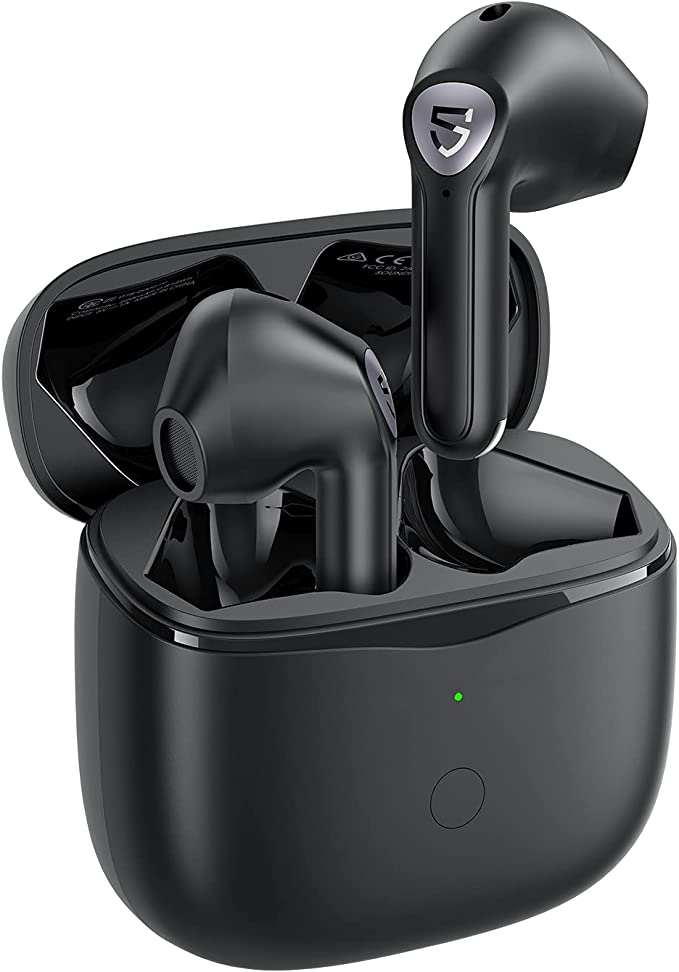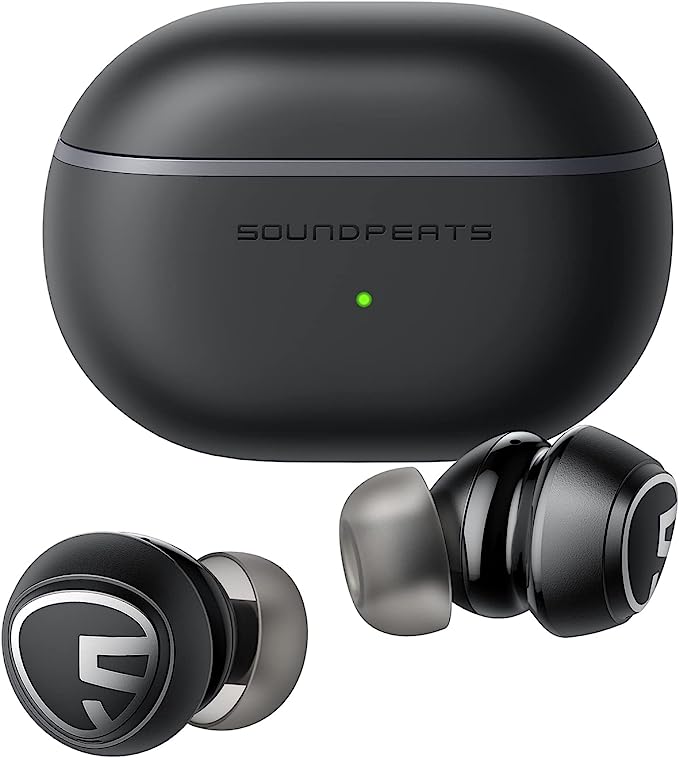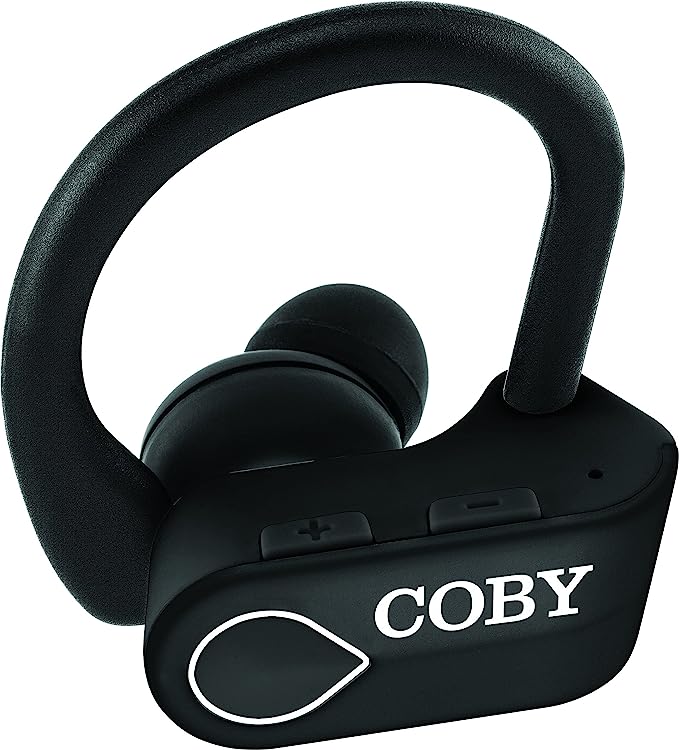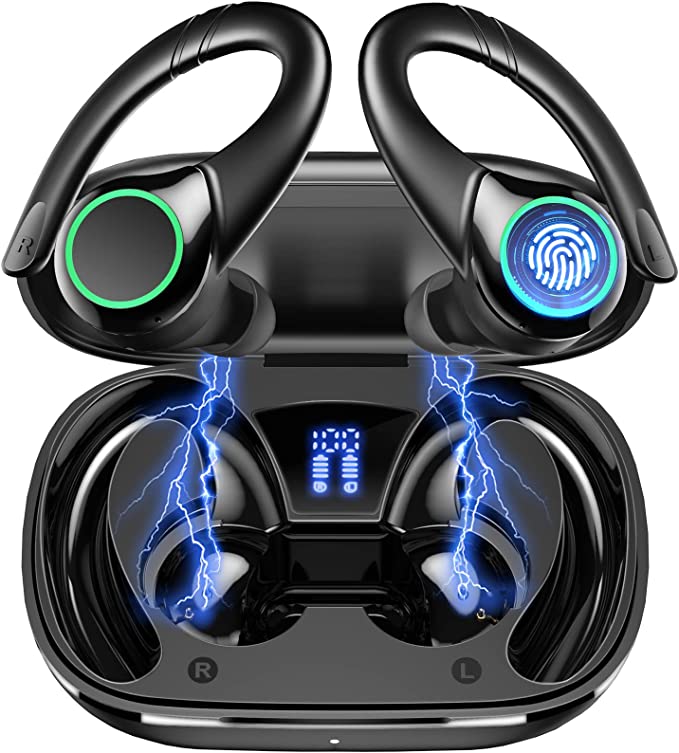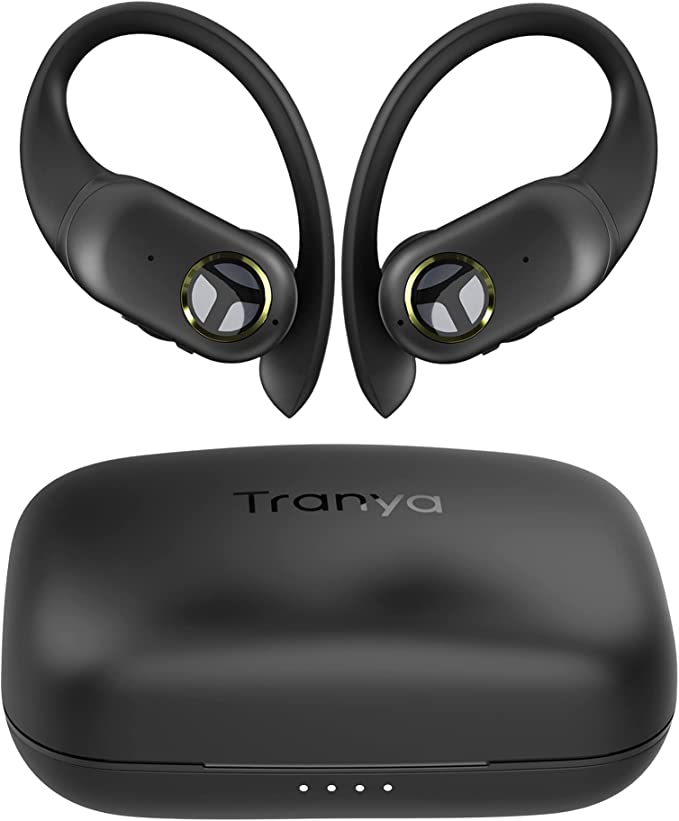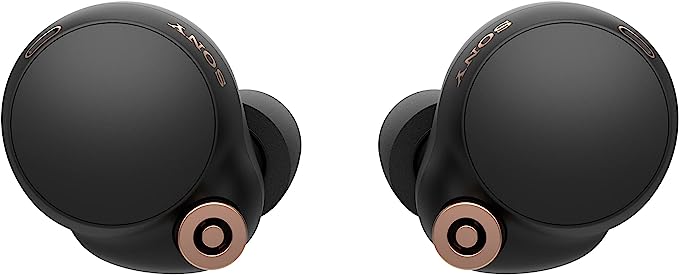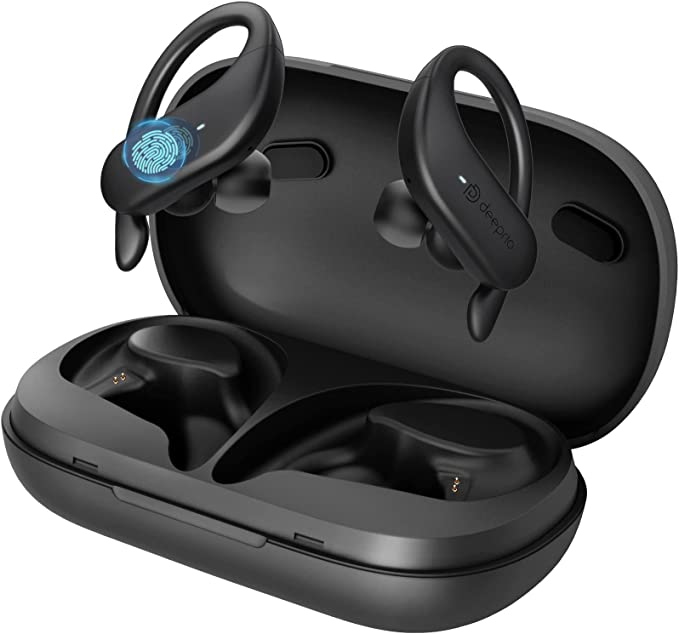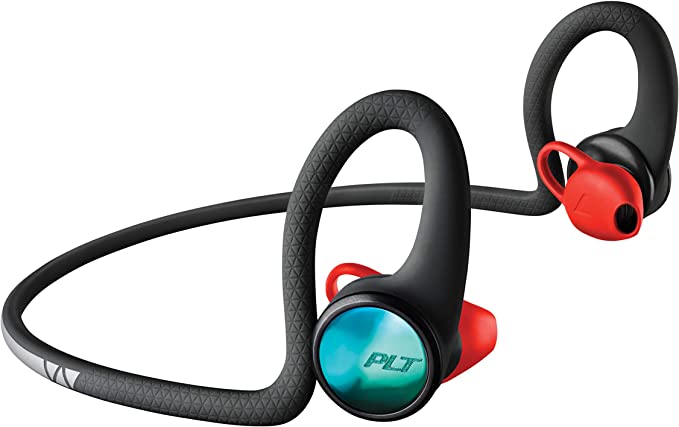SoundPEATS Wings2 & The Science of Wireless Audio: Understanding Secure-Fit Earbuds for Active Lifestyles
Update on May 15, 2025, 5:03 a.m.
Ever been in the zone, pulse thrumming, a driving beat a vital part of your workout موسيقى (mūsīqā - music), only to have an earbud skitter away with a rogue bead of sweat? Or perhaps you’ve wrestled with a tangled mess of wires, or endured audio that crackles and drops just when your favorite track hits its crescendo. If music is the fuel for your active life, the quest for the perfect wireless sport earbuds is a journey many of us have embarked upon. These marvels of miniaturization are more than just tiny speakers; they are a confluence of sophisticated science and thoughtful engineering.
While the specific SoundPEATS Wings2 model we’ll use as our guide today is noted as “currently unavailable,” its features provide a fantastic lens through which we can explore the fascinating technology embedded in many modern wireless sport earbuds. This isn’t a review, but rather an expedition into the “why” and “how” behind the features that promise to elevate your listening experience, especially when you’re pushing your limits. So, let’s unravel the science that makes your workout soundtrack sing.

The Art of Staying Put: Ergonomics and the Magic of Ear Hooks
Picture this: you’re mid-sprint, or powering through a set of burpees, and suddenly, an earbud makes a bid for freedom. It’s a common frustration, and one that designers of sport-centric audio gear, like those who conceptualized the SoundPEATS Wings2 with its “semi-in-ear earhooks,” tackle with a keen understanding of ergonomics and physics.
The human ear, particularly the auricle (that visible, cartilaginous outer part), isn’t just for show; its complex curves and folds offer natural anchoring points. This is where ear hooks come into play. Think of them as gentle, custom-fit grappling hooks for your ears. They loop over the top and often trace the back of the auricle, distributing the earbud’s weight and any kinetic forces from your movement across a broader surface area. This dramatically enhances stability compared to earbuds that rely solely on an in-canal fit. It’s a bit like how a rock climber uses multiple points of contact for security. The science here involves biomechanics – understanding how the ear moves and bears weight – and material science. The materials used for these hooks need to be lightweight to avoid dragging, flexible enough to conform without pressure, yet resilient enough to withstand daily use and the occasional tug. This is why users often value the “comfortable ear” and “secure ear hooks” experience; it’s a direct result of science meeting human-centered design, allowing you to focus on your stride, not on a stray bud.

Weaving the Unseen Web: How Bluetooth 5.3 Creates a Seamless Audio Stream
The leap from the frustrating tethers of wired headphones to the liberating expanse of wireless audio is largely the story of Bluetooth. The Wings2, for example, feature Bluetooth 5.3. But what does that number truly signify for your daily sweat session?
At its core, Bluetooth is a wireless technology standard for exchanging data over short distances using UHF radio waves, typically in the 2.4 GHz band. It employs a clever technique called frequency-hopping spread spectrum, which means it rapidly switches frequencies to minimize interference from other devices like Wi-Fi routers or microwave ovens – imagine it as a nimble dancer deftly navigating a crowded ballroom.
Each iteration of Bluetooth has brought refinements. Bluetooth 5.3 offers a compelling trio of enhancements:
- A Wider, Smoother Data Superhighway: Think of it like upgrading from a bumpy country lane to a multi-lane expressway. Bluetooth 5.3 generally offers faster transmission capabilities and a more robust connection. This means the audio data from your phone reaches your ears with fewer interruptions, even in signal-congested environments like a busy gym.
- The Energy Conservationist: This version is more power-efficient. It allows the earbuds to “sip” energy from their tiny batteries rather than “gulping” it, by enabling devices to spend more time in low-power states without sacrificing responsiveness. This is a critical factor in achieving those impressive multi-hour playtimes.
- The Anti-Interference Strategist: Bluetooth 5.3 includes features that allow it to more intelligently avoid channels that are experiencing interference, leading to a more stable and “clean” connection.
And that almost magical “auto-pairing” – where your earbuds greet your phone like an old friend the moment you take them out of their case? That’s thanks to sophisticated communication protocols within Bluetooth, where devices perform a quick, secure “handshake” to recognize and connect to each other. For you, this means less time fiddling with settings and more time immersed in your audio.

The Heartbeat of Your Music: How 13mm Drivers Craft an Immersive Soundscape
The soul of any earbud, the component that breathes life into electrical signals and transforms them into the music that moves you, is its driver. The SoundPEATS Wings2 are listed with 13mm dynamic drivers, aiming for “powerful deep bass” and a “fuller and more immersive” audio experience. Let’s peek behind the curtain.
Most earbuds, including these, utilize dynamic drivers. Imagine a miniature, high-tech drum. It consists of a diaphragm (a thin, flexible membrane, like the drum skin), a voice coil (a coil of fine wire attached to the diaphragm), and a magnet. When the electrical audio signal (your music) flows through the voice coil, it creates a fluctuating magnetic field. This field interacts with the permanent magnet, causing the voice coil – and the diaphragm attached to it – to vibrate rapidly. These vibrations create pressure waves in the air, precisely mimicking the original sound waves, which your eardrums then pick up and your brain interprets as music.
Now, why does size matter, as in the 13mm specification? Generally, a larger diaphragm has a greater surface area, allowing it to move more air. This can be particularly advantageous for reproducing lower frequencies – the bass notes that provide depth and punch to your music – with more authority and less distortion. It’s like comparing the resonant boom of a large bass drum to the tap of a smaller snare. While a 13mm driver is quite generous for an earbud, crafting that “powerful deep bass” and “fuller” sound isn’t just about size. The material of the diaphragm (different materials have different stiffness and damping properties), the strength of the magnet, and, crucially, the acoustic tuning performed by engineers all play a vital role. “Stereo sound,” of course, comes from having two independent audio channels, one for each ear, which our brains use to perceive a sense of space and directionality, leading to that coveted “immersive” feeling.

Uninterrupted Power: The Science of Extended Battery Life and Convenient Charging
There’s nothing quite like the sinking feeling when your energizing playlist cuts out mid-marathon because your earbuds have run out of juice. This “battery anxiety” is a real concern for active users. The Wings2 are specified with up to 8 hours of playtime on a single charge from the earbuds themselves, with the charging case providing an additional 2.8 recharges, culminating in a total of up to 30 hours of listening time.
This impressive endurance is a testament to several interlinked technologies:
- The Mighty Lithium-Ion Cell: These compact powerhouses pack a significant amount of energy into a small space (high energy density) and can be recharged hundreds of times. The tiny batteries within each earbud are marvels of this technology.
- Smart Power Management: It’s not just about how much power you have, but how wisely you use it. Modern earbuds employ sophisticated Systems-on-Chip (SoCs) and leverage the power-saving features of technologies like Bluetooth 5.3 (as we discussed) to minimize energy consumption during playback, and especially when idle.
- The Charging Case: More Than Just a Box: The case isn’t merely for storage; it’s a portable power bank. It houses its own larger battery, ready to replenish the earbuds multiple times.
- The Rise of Type-C: The mention of a “Type C Charger” points to the now-ubiquitous USB Type-C port. Its popularity stems from its reversibility (no more fumbling to plug it in the right way!), its potential for faster charging speeds, and its increasing adoption as a universal standard across many devices.
All this means you can typically get through several long workouts, or even a full week of commutes and gym sessions, without needing to hunt for a wall outlet.

Fingertip Control and Split-Second Timing: Touch Controls & Low Latency Mode
In the heat of a workout, fumbling for your phone to skip a track or answer a call is distracting and inconvenient. The SoundPEATS Wings2, like many contemporary earbuds, feature touch controls, allowing you to manage your audio and calls with simple taps or swipes directly on the earbuds. This “magic” usually relies on capacitive sensing technology. Your skin is naturally conductive. When you touch the designated surface of the earbud, you cause a minute change in its electrical capacitance, which a sensor detects as a command. This allows for a sleek, button-free design that’s often more resistant to sweat and wear since there are no moving mechanical parts.
But what about when every millisecond counts, like in mobile gaming or watching fast-paced videos? This is where “low latency” becomes crucial. Latency, in this context, is the delay between an event happening on your screen (like a character speaking or an explosion in a game) and you hearing the corresponding sound. High latency can lead to an annoying desynchronization – think of a poorly dubbed movie. The Wings2 boast a “70ms low-latency game mode.” To put 70 milliseconds (0.07 seconds) into perspective, human reaction times to visual stimuli are typically around 200-250ms. For gaming, a lower latency means sound cues (like approaching footsteps or gunfire) are more accurately timed with the on-screen action, potentially giving you a competitive edge. This is often achieved through optimized audio codecs, reduced buffering in the data transmission pathway, and faster internal processing within the earbuds. It ensures your audio experience is as responsive and immediate as the visuals.
Your Sound, Your Rules: The Power of App-Based Customization
The experience with modern electronics increasingly extends beyond the physical hardware into the realm of software. The mention of the “SOUNDPEATS App for customizable manipulation” for the Wings2 highlights this trend. Companion apps for earbuds are becoming standard, and for good reason. They can unlock a host of functionalities:
- Equalizer (EQ) Settings: Our hearing and sound preferences are unique. An EQ allows you to adjust the levels of different frequencies (bass, midrange, treble) to tailor the sound profile to your liking, or to better suit different genres of music. Want more thump for your hip-hop playlist? Or clearer vocals for a podcast? The app can make it happen.
- Customizable Controls: Some apps allow you to redefine what different tap gestures do, offering a more personalized interaction.
- Firmware Updates: This is a significant benefit. Manufacturers can release firmware updates to improve performance, fix bugs, or even add new features to your earbuds after you’ve purchased them. It’s like giving your earbuds a little tune-up or a software upgrade, keeping them current.
This software layer essentially makes your hardware more versatile and adaptable, ensuring it can evolve with new advancements or your changing preferences.
Beyond the Specs: What Else Makes a Great Sport Earbud?
While our exploration has been guided by the features of the Wings2, a holistic view of what makes sport earbuds truly shine often includes a couple more general, yet crucial, considerations, even if not detailed for this specific model:
- Resistance to the Elements (IPX Ratings): When you’re working out, sweat is inevitable, and sometimes you might get caught in the rain. An IPX rating (Ingress Protection) indicates an earbud’s level of protection against water and dust. For instance, an IPX4 rating means it’s resistant to water splashes from any direction (good for sweat and light rain), while higher ratings like IPX7 mean it can even be submerged for a short period. This is a vital feature for the longevity of any sport-focused audio gear.
- Clarity in Communication (Microphone Technology): The “Built-in Mic Headset” feature enables hands-free calls. In a quiet room, most mics perform adequately. But in a noisy gym or on a windy street, advanced microphone technology, often incorporating noise-filtering algorithms (like cVc - Clear Voice Capture) or multiple microphones to better isolate your voice, becomes essential for clear conversations.

The Final Note: Listening to the Symphony of Science in Your Ears
As we’ve journeyed through the intricate world packed inside a pair of wireless sport earbuds, exemplified by the SoundPEATS Wings2, it becomes clear that these devices are far more than simple accessories. They are miniature concert halls, communication hubs, and motivational partners, all made possible by a remarkable interplay of ergonomics, wireless communication advancements, acoustic engineering, material science, and sophisticated software.
Understanding the science behind why an ear hook keeps your music secure, how Bluetooth 5.3 delivers a stable stream, or what a 13mm driver does to enrich your bass, doesn’t just satisfy curiosity. It empowers you. It transforms you from a passive consumer into an informed user, better equipped to choose the audio gear that truly resonates with your needs and preferences.
The world of audio technology is ever-evolving. Future sport earbuds will undoubtedly integrate even smarter features – perhaps more advanced biometric sensors, truly personalized audio environments through AI, or materials that are virtually weightless yet indestructible. But the fundamental principles of delivering clear, reliable, and engaging sound to an active user will remain.
So, the next time you pop in your earbuds and that first note hits, take a moment. Appreciate the unseen symphony of science and engineering that’s working tirelessly to bring that rhythm to your run, that beat to your bike ride, that soundtrack to your sweat. Because understanding the magic doesn’t diminish it; it only makes the music sound sweeter.

